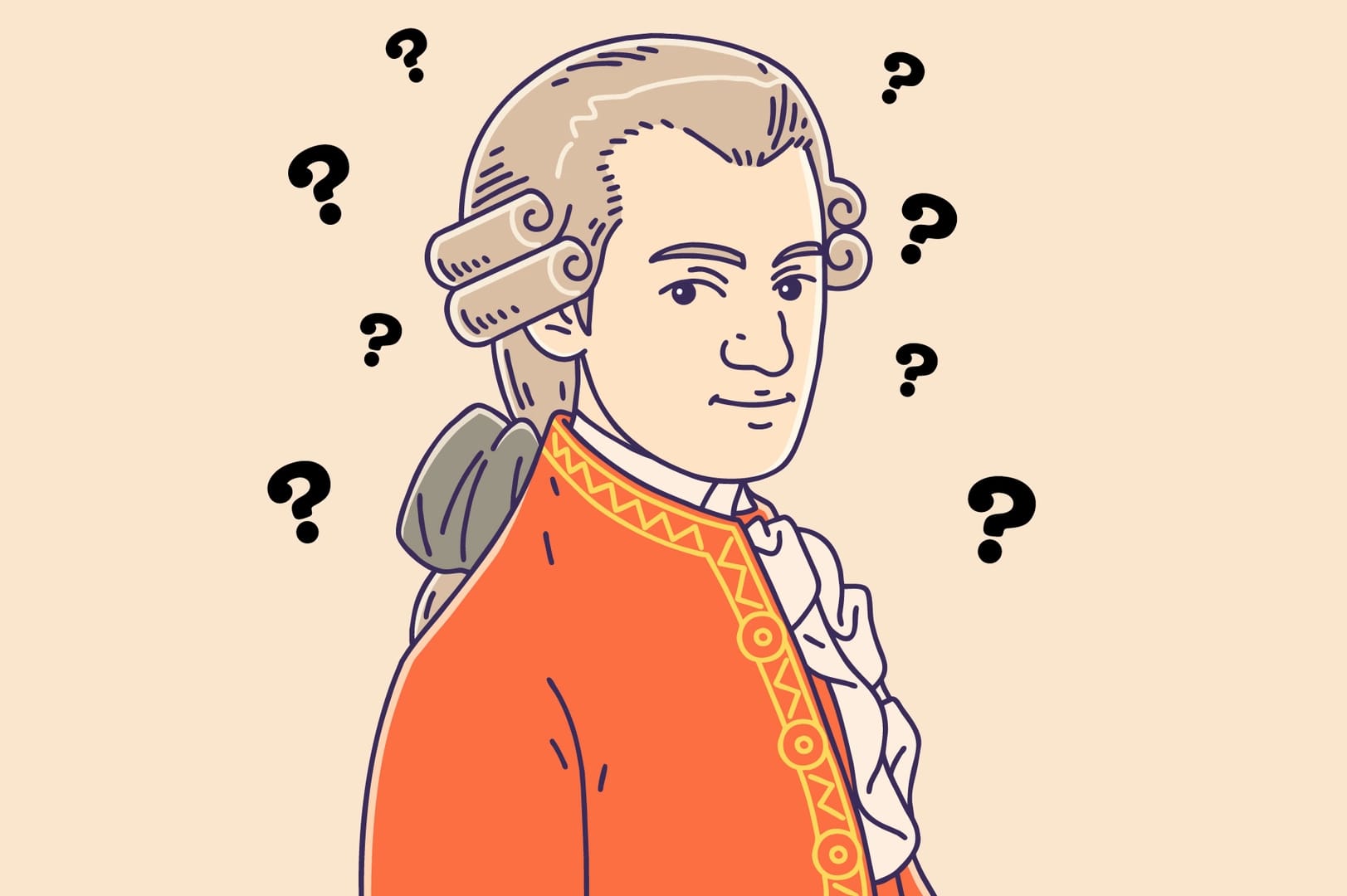The 1984 film Amadeus (adapted by Peter Shaffer from his 1979 play) was beautifully crafted by director Miloš Forman, made Mozart a movie star, and brought his music to a wider audience. It also inspired many people to point out its inaccuracies, but let’s remember that the film is popular entertainment, not a scholarly dissertation.
That said, let’s address the most provocative question raised by the movie:
Did Mozart really have pink hair? Not that I can determine.
But really, the most provocative question is: Did Antonio Salieri really kill Mozart?
Amadeus shows us Salieri’s jealousy of Mozart and his animosity toward Mozart that supposedly would turn to hatred and murderous rage.
This animosity is introduced early in Amadeus, in a scene in which we see Mozart the newcomer annoying court composer Salieri. Mozart has come to meet Emperor Joseph II and Salieri has composed a little welcome march. Mozart, who has committed the piece to memory after one hearing, sits down at the keyboard, hints at the deficiency of Salieri’s piece, and improvises a brilliant continuation that fascinates everyone present and brings forth a forced smile from Salieri.
One clear distortion in this scene is the debate over whether the opera being commissioned from Mozart should be in Italian or German. The manager of the theatre, Count Orsini-Rosenberg, is seemingly partial to Italian, but in reality, it was with his backing that a German libretto was prepared for The Abduction from the Seraglio.
Mozart would not have had to make the case for German to the Emperor as he does here. The Abduction from the Seraglio is not an opera. It is a Singspiel, which, unlike an opera, contains spoken dialogue. The Singspiel offered an antidote to the proliferation of Italian opera. And Mozart’s work was being composed for the National Singspiel Theatre, which had recently been created by the Emperor!
From a dramatic perspective, this distortion allows Mozart to argue for a German libretto because, he says, the Italians know nothing about love, an assertion that understandably ruffles Signor Salieri’s feathers.
What was Salieri really like? Actually, it seems that he was a charming fellow. We get some insight from Lorenzo Da Ponte, the librettist of Mozart’s The Marriage of Figaro, Don Giovanni, and Così Fan Tutte. In his memoirs, Da Ponte was full of praise for Mozart’s music, but he was even more positive when he talked about Salieri’s personality. He called him “a most cultivated and intelligent man…whom I loved and esteemed both out of gratitude and by inclination…more than a friend, a brother to me.”
So how did playwright Shaffer come up with a homicidal Salieri?
He didn’t. In the early 1820s, three decades after Mozart’s death, there was a rumor in Vienna that Salieri had confessed to having poisoned Mozart, a rumor that may have stemmed from something Salieri said in one of his less mentally acute moments. He did assure a friend that the rumors were false.
But the rumor was picked up by the Russian writer Alexander Pushkin and, in 1830, he wrote a play called Mozart and Salieri. In 1897, Rimsky-Korsakov turned it into a one-act opera with a libretto taken almost verbatim from Pushkin’s play.
In Pushkin’s narrative, Salieri, despite his high position as a composer, is secretly jealous of Mozart’s works because he sees them as works of great quality by someone of questionable character. Salieri invites Mozart to dinner and plans to poison him. While they’re dining at an inn, Salieri pours poison into Mozart’s drink.
That’s much more dramatic than the generally accepted cause of Mozart’s death, chronic renal failure.







